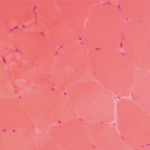 ROME, Italy—Fatigue, a problem experienced frequently by patients with rheumatic diseases, is best thought of as a survival mechanism and as a single phenomenon, not a condition that comes in a variety of forms, an expert said in a session at EULAR 2015, the annual congress of the European League Against Rheumatism (EULAR).
ROME, Italy—Fatigue, a problem experienced frequently by patients with rheumatic diseases, is best thought of as a survival mechanism and as a single phenomenon, not a condition that comes in a variety of forms, an expert said in a session at EULAR 2015, the annual congress of the European League Against Rheumatism (EULAR).
Gene Regulated
Roald Omdal, MD, professor of medicine at the University of Bergen in Norway, said studies have shown that there is a biological basis for fatigue, that fatigue is gene regulated and that there may be several pathways that bring about fatigue in patients.
The “sickness behavior” model—the condition in which patients with an infection, such as the flu, lose their appetite, want to be left alone, feel fatigue and so on—is a good model to use when thinking about fatigue, Dr. Omdal said. The infection brings about a cytokine response—and the cytokine that is involved with fatigue is interleukin 1 beta (IL-1-beta), he said.
“In my opinion, interleukin 1 beta signaling is the fatigue cytokine,” he said. “There is convincing evidence from animal studies—and also, lately, in humans—that this plays an important role.”1
Thinking of fatigue in this way fits in with the somewhat strange findings that there is no clear association between the degree of inflammation or disease activity and the level of fatigue. That could be because it might not actually be the inflammation that brings on fatigue, but the response to the inflammation that causes it. This would make sense when considering that fatigue is a phenomenon that has been preserved through the evolution process as a defense mechanism of sorts.
“In healthy or normal humans and normal animals, fatigue is supposed to be beneficial for you,” he said. “Why is it so? It’s a complex survival mechanism, strongly conserved during evolution. And it increases the probability that you [will] survive infections, injury and danger,” making it less likely that predators will find you and eat you while the immune system is fighting the infection.
“Most studies find no clear association between the grade of inflammation or disease activity and the grade of fatigue.”
There is a treatment challenge with fatigue, Dr. Omdal said. Traditional drugs don’t help, although biologics and small-molecule drugs, such as Jak inhibitors, have been found to help alleviate fatigue, he said.2,3
Muscle Fatigue
In a talk based mainly on studies of skeletal muscle function discrete from the nervous system, a muscle physiologist said the muscles in patients with rheumatoid arthritis (RA) have something intrinsically problematic going on that is separate from the loss of muscle mass.
Håkan Westerblad, PhD, professor of cellular muscle physiology at the Karolinska Institute in Sweden, who for 30 years has studied what happens to muscles when they fatigue, said this understanding seems to be leading to potential treatments.
“With the same size, muscle fibers from an RA patient produce less force,” he said. “There is an intrinsic problem inside the muscle fibers.”
Through a series of studies, researchers at Karolinska Institute have found that in mouse models of RA and in RA patients, decreased force is related to increases in reactive oxygen/nitrogen species or free radicals. The muscles in RA patients, they found, have more neuronal nitric oxide synthase (nNOS), which means more production of the free radical, nitric oxide. At the same, these muscles also have decreased levels of superoxide dismutases (SOD2), which metabolizes the reactive oxygen species superoxide.
The combined increase in nitric oxide and superoxide then leads to the accumulation of a highly reactive molecule—peroxynitrite, or ONOO—that can change the function of proteins inside cells.
Dr. Westerblad said the rise in nNOS as such is probably not the real problem.
“It’s also that it moves,” he said. In this case, nNOS sits on the ryanodine receptor complex, a critical protein complex that controls how much calcium is being released inside cells during muscle contraction. This has been observed in both slow-twitch and fast-twitch muscles, Dr. Westerblad said. “It seems to move in all of them,” he said.
The effect of these radicals was a little bit surprising.
“Calcium release is not actually decreased; it’s rather increased, so you have an increased calcium release in the muscles cells” he said. ”Calcium is needed for proper contraction,” he said, “but on the other hand, it’s sort of playing with fire, because too much calcium in the wrong place is not very good either.”4
Looking further, researchers found that the weakness itself is likely brought about by 3-NT or 3-nitrotyrosine, binding to actin. If myosin is the motor of the muscle, then actin is “the rope, in a way, that the motor is pulling,” Dr. Westerblad said. If the function of actin is disrupted, weakness can occur.
In a study accepted for publication in Skeletal Muscle, researchers have found that this process of weakening can be prevented, in an RA rat model, with treatment with the antioxidant EUK 134.5
“If we treat them with the antioxidant EUK 134, they completely recover their force production,” Dr. Westerblad said. But researchers also found that knee swelling was not affected by this treatment, indicating that there are separate mechanisms at work.
Elsewhere, researchers have found that weakness can also be treated with an endurance training program. Cycling times increased after training in myositis patients, and importantly, lactate levels were found not to have risen and were even somewhat reduced.6
“Lactate is not higher, so it is not that the myositis patients improved their neuronal activation of muscles,” Dr. Westerblad said. “It must be that the muscles perform much better than they did before training.”
Thomas R. Collins is a freelance medical writer based in Florida.
References
- Norheim KB, Harboe E, Gøransson LG, et al. Interleukin-1 inhibition and fatigue in primary Sjögren’s syndrome—A double blind, randomised clinical trial. PLoS One. 2012;7(1):e30123.
- Carubbi F, Cipriani P, Marrelli A, et al. Efficacy and safety of rituximab treatment in early primary Sjögren’s syndrome: A prospective, multi-center, follow-up study. Arthritis Res Ther. 2013 Oct 30;15(5):R172.
- Strand V, Burmester GR, Zerbini CA, et al. Tofacitinib with methotrexate in third-line treatment of patients with active rheumatoid arthritis: Patient-reported outcomes from a phase III trial. Arthritis Care Res (Hoboken). 2015 Apr;67(4):475–483.
- Yamada T, Fedotovskaya O, Cheng AJ, et al. Nitrosative modifications of the Ca2+ release complex and actin underlie arthritis-induced muscle weakness. Ann Rheum Dis. 2014 May 22. pii: annrheumdis-2013-205007. doi: 10.1136/annrheumdis-2013-205007. [Epub ahead of print].
- Yamada T, et al. Skeletal Muscle.
- Alemo L, Munters M, Dastmalchi A, et al. Improved exercise performance and increased aerobic capacity after endurance training of patients with stable polymyositis and dermatomyositis. Arthritis Res Ther. 2013 Aug 13;15(4):R83.



